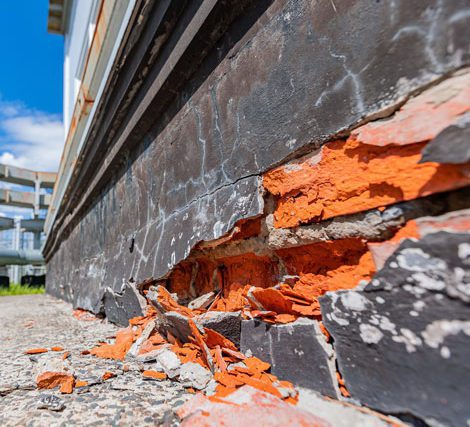
Spotting a crack in your walls, floor, or foundation is frustrating and can be stressful. They are evidence of damage to your home that requires repair, which isn’t happy news for anyone. Equipping yourself with some knowledge about what cracks to watch for and potential repair options will allow you to know when to ask for help from a professional.

What To Look For
Not all foundation cracks are created equal. Some are relatively benign, though you will want to keep your eye on them. Others are far more serious and require prompt attention. Here are five of the most common types of foundation cracks:
- Horizontal Cracks: As the name implies, these run horizontally along your concrete foundation.
- Vertical Cracks: You may see these in the middle section of your wall, running up from the ground.
- Basement Floor Cracks: These will be most visible in unfinished basements. They typically start in a corner and spread out across the floor.
- Stair-step Cracks: This crack is a sign of serious foundation trouble. They appear on masonry and brick foundations, and concrete block construction.
- Diagonal Cracks: Commonly found around the corners of doors and windows, these cracks look worse than they are.

How to Fix Foundation Cracks
Most importantly, you cannot simply patch over cracks. They require the skilled hand of a foundation repair expert. Frequently, these cracks are signs of more significant structural damage, which only a professional can properly assess.
Your local foundation crack repair expert has several solutions at their disposal. What they recommend depends on the crack’s severity, as well as any other underlying problems. Some possible solutions include:
SmartJack: This solution uses a set of fully adjustable, high-capacity steel support posts that are placed under sagging structural supports. They can then be progressively tightened to lift floors back to a more level placement.
Sister joists: Severely deteriorated wooden beams may need to be paired with a sister joist. These are brand new beams which we’ll install alongside weak existing beams for added support.
Replacement beams: If your wooden beams are too deteriorated to repair in your home, a full support beam replacement may be necessary. We’ll replace the old wooden beams with metal I beams, so you’ll never have to worry about wood rot again.
If you notice cracks in your foundation and have questions, don’t hesitate to contact the trusted experts of Virginia Foundation Solutions.





